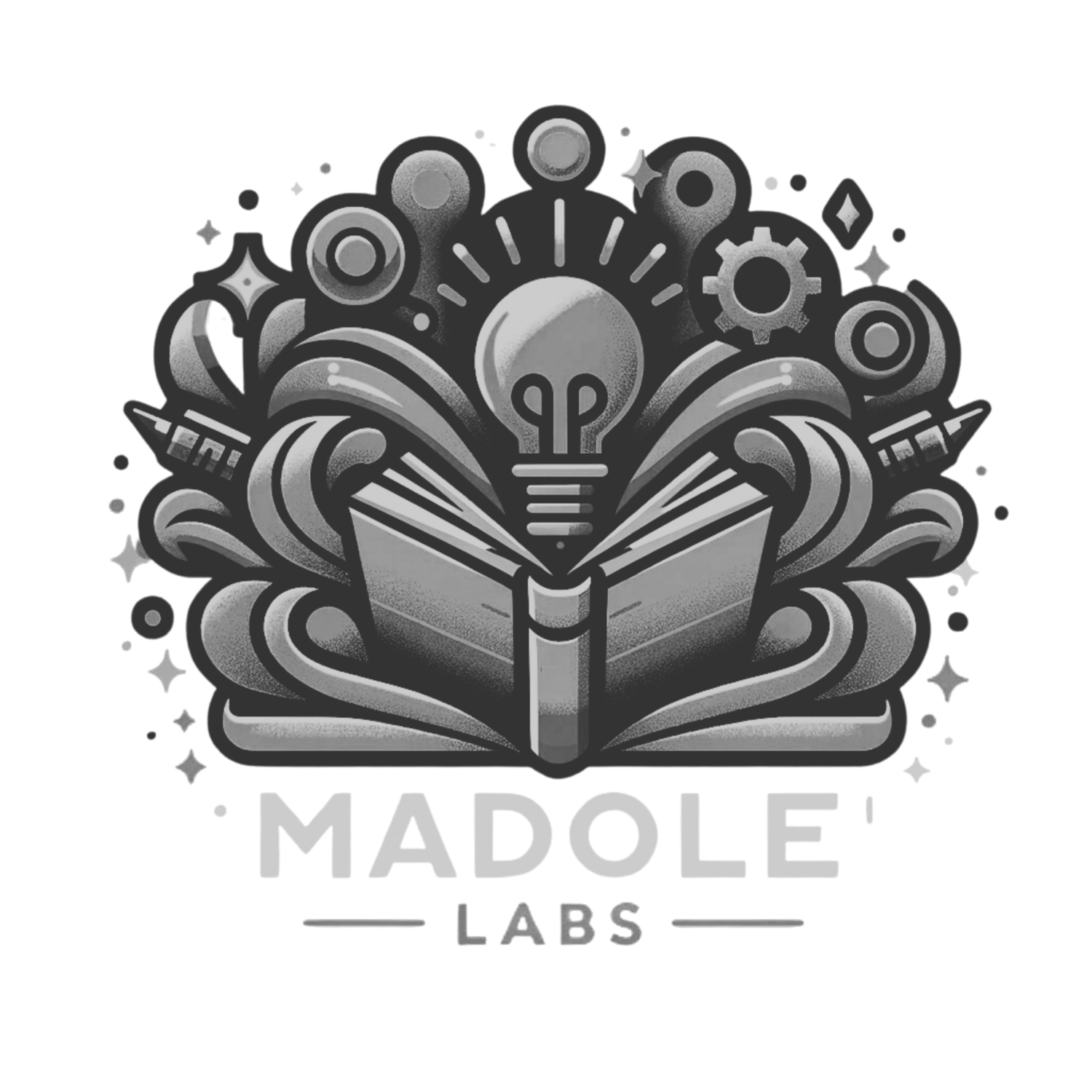Low and medium-content books have emerged as a unique and flourishing category in the diverse publishing industry. These books, ranging from journals, planners, and coloring books (low content) to workbooks and guided educational materials (medium content), have carved out a significant niche in the market. Their appeal lies in their simplicity and utility, offering consumers a personalized experience often absent in traditional, high-content publications.
Understanding the trends governing this sector is crucial for several reasons. For authors and publishers, it provides valuable insights into consumer preferences, guiding them in creating content that resonates with current demands. For readers, staying informed about these trends means discovering books that cater to their specific needs and innovatively enhancing their reading and writing experiences.
This blog post aims to delve into the evolving trends of low and medium-content books. We will explore how digital integration is changing the game, the rising demand for customization and personalization, the significance of targeting niche markets, and the increasing importance of sustainability in book production. Furthermore, we'll examine the shift towards online marketplaces, the impact of social media marketing, and technological advancements shaping the publishing future. By understanding what readers look for in these books, authors and publishers can better align their offerings with market expectations, paving the way for success in this dynamic segment of the publishing world.
Understanding Low and Medium Content Books
In the ever-expanding universe of publishing, books with low and medium content have steadily risen to prominence, appealing to many readers and creators alike. To fully appreciate their impact and growing popularity, it's essential first to define and understand what these categories entail.
Low-Content Books: These publications contain minimal to no written content from the author. Examples include journals, planners, diaries, sketchbooks, and coloring books. Their primary feature is the space they provide for the user's input – writing, drawing, planning, or coloring. The appeal of low-content books lies in their simplicity and versatility. They serve as vessels for creativity, organization, and personal reflection. From bullet journals that combine planning and creativity to coloring books that offer stress relief and a channel for artistic expression, these books have become staples for individuals seeking practicality and a personal touch in their daily routines.

Medium Content Books: This category balances written content and user interaction. Medium content books include workbooks, guided educational materials, puzzle books, and partially guided journals. They are typically more structured than low-content books, providing guidance, prompts, or educational content but still leaving ample room for the user's engagement and responses. These books are prevalent in educational contexts, self-help, and skill development areas, offering a blend of instruction and personal application.
The growing popularity of low and medium-content books in the publishing industry can be attributed to several factors. The rise of DIY culture and the growing interest in personalized, hands-on experiences have played a significant role. In an age where digital media dominates, these physical books offer a tangible, interactive experience. They cater to the desire for individual expression and customization in a way that traditional books cannot.
The ease and cost-effectiveness of producing such books have attracted many independent authors and small publishers. Platforms like Amazon KDP have lowered the barrier to entry, allowing creators to publish without substantial upfront costs. This democratization of publishing has led to a diverse range of offerings in the market, catering to ever-niche interests and needs.
Moreover, the pandemic-induced shift towards home-based activities further fueled their popularity. People turned to journals and planners to manage their new routines and activity books for leisure and learning at home. This trend underscores the adaptability of low and medium-content books to changing lifestyles and their ability to meet varied consumer needs.
Recent Trends in Low and Medium Content Books
The publishing industry is transforming significantly, particularly in low and medium-content books. Four key trends have emerged, reshaping how these books are created, marketed, and used. These trends - digital integration, customization and personalization, niche targeting, and a focus on sustainability - reflect broader societal shifts and technological advancements.
Digital Integration
Integrating digital elements into low and medium-content books represents a significant trend. E-books have become increasingly popular, but the innovation doesn't stop at digitizing the content. Interactive digital tools are being incorporated to enhance the user experience. For example, digital versions of planners and journals often include clickable tabs and interactive elements that allow users to navigate the content more efficiently. Additionally, augmented reality (AR) features are being introduced in some physical books, where users can access additional digital content or interactive experiences through their smartphones. This blend of physical and digital offers a more dynamic, engaging experience catering to the tech-savvy consumer.

Customization and Personalization
Personalization is at the forefront of consumer preferences across various industries, and publishing is no exception. Low and medium-content books are increasingly being tailored to individual preferences. This can range from customizable covers and pages in journals and planners to personalized workbooks and educational materials that cater to the user’s learning style or interests. Print-on-demand technologies make it easier for publishers to offer personalized options without significant inventory risks. This trend enhances the user experience and strengthens the emotional connection between the reader and the book, increasing engagement and loyalty.
Niche Targeting
Publishers also focus on niche targeting, creating low and medium-content books catering to specific interests or needs. This can be seen in the proliferation of wellness journals, productivity planners, hobby-specific workbooks, and culturally-themed coloring books. By targeting specific niches, publishers can appeal to distinct audiences, offering content that resonates deeply with their interests and lifestyles. This approach not only helps in standing out in a crowded market but also allows for the creation of solid and engaged communities around specific types of content.
Sustainability Focus
There is an increasing demand for eco-friendly materials in the production of physical books, a trend that extends prominently into the low and medium-content book market. Consumers are more environmentally conscious, which is reflected in their purchasing decisions. Publishers respond using recycled paper, eco-friendly inks, and sustainable production processes. Some are also adopting a more holistic approach by considering the environmental impact of their entire supply chain, from production to distribution. This shift appeals to the eco-conscious consumer and aligns with global efforts to reduce environmental impact, making it a responsible and ethical business practice.

These trends showcase the evolving nature of low and medium-content books. By embracing digital integration, personalization, niche targeting, and sustainability, publishers are not only meeting the current demands of consumers. Still, they are also setting the stage for future growth and innovation in this dynamic sector of the publishing industry. As these trends continue to develop, they will undoubtedly open up new opportunities and challenges, shaping the future of how we interact with and perceive books.
Market Evolution
The market for low and medium-content books has seen remarkable changes in recent years, significantly influenced by the shift to online marketplaces, the impact of social media marketing, and various technological advancements. These elements have collectively reshaped the landscape of book production, distribution, and marketing, presenting both opportunities and challenges for authors and publishers.
Shift to Online Marketplaces
One of the most significant shifts in the publishing industry has been the move towards online marketplaces, with platforms like Amazon's Kindle Direct Publishing (KDP) leading the charge. These platforms have democratized the publishing process, making it more accessible to independent authors and small publishers. With Amazon KDP, for example, anyone can publish a book with minimal upfront costs without needing a traditional publisher. This has led to an explosion in low and medium-content books available, as creators can quickly reach a global audience. Online marketplaces also offer print-on-demand options, allowing for books to be printed only when there is a demand, thus reducing inventory risk and upfront costs. This shift has empowered authors and diversified the types of books available to consumers, catering to a wider range of interests and needs.
The Impact of Social Media Marketing
Social media has become a powerful tool for marketing low and medium-content books. Platforms like Instagram, Facebook, and Pinterest are particularly effective for showcasing these types of books, which often rely heavily on visual appeal. Authors and publishers use these platforms to engage directly with their audience, build communities around their content, and leverage influencers to expand their reach. Social media marketing allows for targeted advertising, where authors can reach specific demographics more likely to be interested in their books. The interactive nature of social media also enables authors to receive immediate feedback, understand reader preferences, and adjust their strategies accordingly. This direct line of communication has revolutionized how books are marketed and has become an essential tool in the publisher’s and author’s arsenal.

Technological Advancements
Technological innovations have played a pivotal role in the evolution of the market for low and medium-content books. For instance, print-on-demand services have revolutionized how books are printed and distributed. These services enable authors to print books as needed, eliminating the need for large print runs and reducing waste. This is particularly beneficial for low and medium-content book creators, who often operate with lower budgets and smaller audiences.
Artificial Intelligence (AI) is also beginning to influence the publishing industry. AI can assist in book production, from content creation to market analysis. For example, AI algorithms can help design book covers, predict market trends, and suggest themes or content based on consumer behaviour. Other tech innovations include interactive e-books, where digital content can be updated in real-time, and enhanced analytics tools that provide deeper insights into reader preferences and behaviours.
Predictions for the Future
The market for low and medium-content books is poised for exciting developments shaped by ongoing trends and emerging technological innovations. Based on current trajectories, here are some insights and predictions about where this segment of the publishing industry might be heading.
Emergence of New Niches and Specialized Content
The trend of niche targeting is expected to intensify, with publishers and authors exploring increasingly specialized topics and themes. The rise of individualism and the quest for personalized experiences will likely lead to the creation of low and medium-content books catering to particular hobbies, lifestyles, and interests. We might see an uptick in books aimed at unique segments, such as mindfulness journals for specific professions, planners for niche hobbies, or educational books tailored to unique learning styles.
Integration of Advanced Technologies
Technological advancements, especially in AI and AR, are set to play a transformative role. AI could be used to create more personalized content, where books adapt to the user’s responses or learning progress. We may also see the integration of AR in physical books, adding an interactive layer to the reading experience. For instance, a journal might include AR elements that bring doodles to life, or a workbook could use AR to provide immersive educational experiences.

Sustainability as a Core Principle
As environmental concerns continue to gain importance, sustainability will likely become a critical factor in producing and designing books with low and medium content. This could manifest in increased use of recycled materials, eco-friendly printing practices, and digital alternatives that reduce paper use.
Publishers may adopt more transparent and responsible supply chain practices in response to consumer demand for environmentally conscious products.
Increased Customization and Interactivity
Customization will likely reach new heights, with technology enabling even more personalized and interactive experiences. Future low and medium-content books might offer customizable templates where users can select layouts, themes, and content according to their preferences. Interactivity will also increase, with books incorporating elements that respond to user input, whether it be through written content, voice commands, or digital integration.
Conclusion
In exploring the evolving world of low and medium-content books, we have uncovered several key trends shaping this dynamic sector of the publishing industry. Integrating digital elements and advanced technologies like AI and AR is revolutionizing how we interact with these books. Customization and personalization continue to grow, reflecting a desire for more individualized experiences. Niche targeting allows publishers and authors to cater to specific interests and needs, creating a more engaged and loyal reader base. Moreover, the increasing focus on sustainability underscores a shift towards environmentally conscious production practices.
For anyone publishing low and medium-content books, staying abreast of these trends is not just beneficial; it's essential. The industry is rapidly evolving, and understanding these changes can help make informed decisions, create relevant content, and connect effectively with your audience.
We invite you to share your thoughts and observations on these trends. Are there any particular developments that excite you or areas you believe will become more prominent? Your insights and perspectives are valuable, and we would love to hear from you in the comments section below.
If you're intrigued by what you've read and want to explore our range of low and medium-content books, please visit the Madole Labs eBook Collection. Here, you'll find various books that cater to diverse needs and interests, from planners and journals to puzzle workbooks.
Consider subscribing to our newsletter for more insights, updates, and related posts. It's a great way to stay informed about the publishing industry's latest trends and get a first look at our new releases and offerings. You can subscribe here: Madole Labs Newsletter.
In conclusion, the world of low and medium-content books is one of continual innovation and growth. By staying informed and engaged with these trends, publishers, authors, and readers alike can look forward to a future prosperous in creativity, personalization, and meaningful engagement with books.


Comments ()